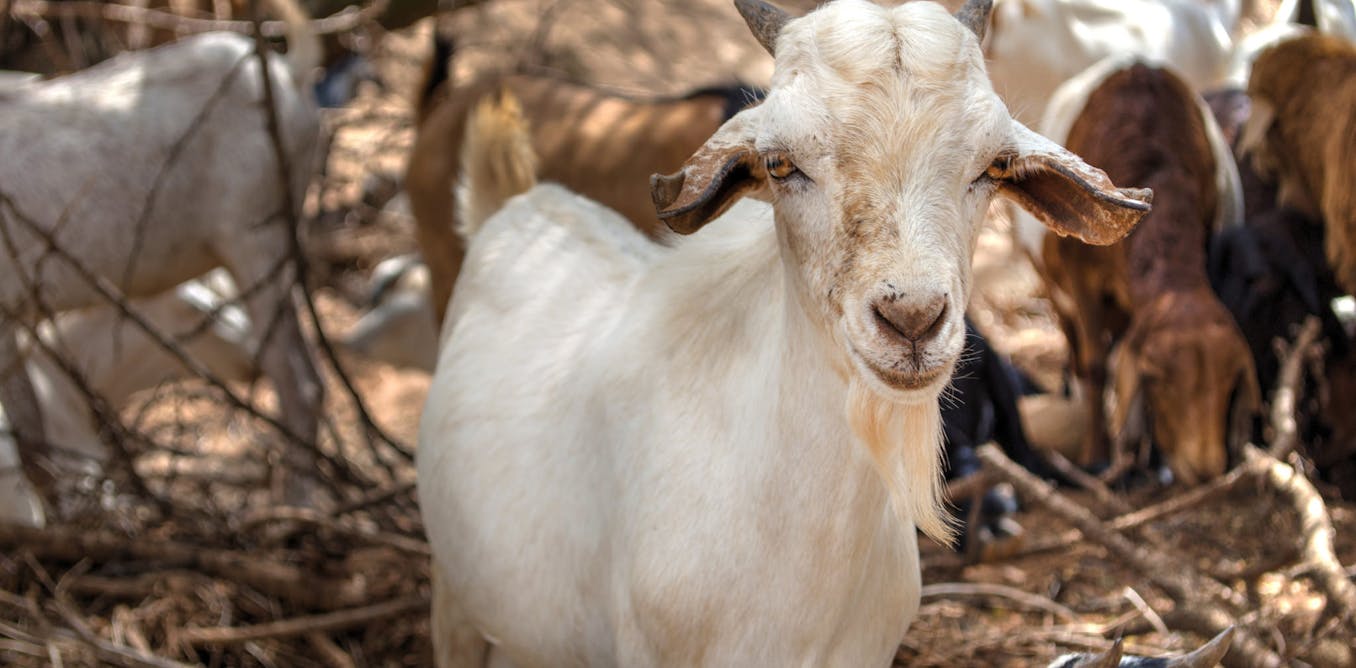[ad_1]
Small ruminant farming inside the Democratic Republic of Congo (DRC) accounts for better than 72% of household incomes but it surely’s beneath threat from a sickness generally called ‘goat plague’, or peste des petits ruminants. The Dialog Africa’s Samantha Spooner requested Ahadi Birindwa regarding the plague and what’s being carried out to stop it.
What is the ‘goat plague’ and the best way widespread is it?
Peste des petits ruminants (PPR) or ‘goat plague’ is an acute viral sickness that impacts dwelling (sheep, goats) and wild (springbok, gazelles and impala) small ruminants. These are animals that carry up meals from their stomach and chew it as soon as extra.
It’s one of many damaging animal diseases, affecting small ruminants in almost 70 nations in Africa, the Heart East and components of Asia. PPR has a extreme morbidity, or incident, (80-90%) worth and mortality (50-80%) worth. It’s additional excessive in youthful animals, these with poor weight-reduction plan and concurrent parasitic infections.
It causes $1.5 – 2 billion in losses yearly in areas that are dwelling to over 80% of the world’s sheep and goats. The sickness is not zoonotic – in numerous phrases it doesn’t impact people. Nevertheless
it impacts meals security and the livelihoods of the poorest small-scale holder farmers. Consequently it’s among the many many priority diseases indicated in a world framework dedicated to the administration of trans-boundary animal diseases.

How is the virus unfold? How contagious is it?
Transmission of PPR is achieved by each direct contact with contaminated animals, or by the use of respiration or contact with saliva. There have moreover been documented circumstances of transmission by the use of the coping with of contaminated animal merchandise.
On account of it’s so contagious, about 1,000,000 goats and 600,000 sheep inside the Democratic Republic of Congo (DRC) are liable to contracting the sickness. This represents 1 / 4 of goats and two-thirds of sheep all by all of the nation. Prevalence is considerably extreme in japanese DRC.
Critiques current that the DRC has been contaminated with goat plague since 2008. Between 2010 – 2012, it triggered the lack of lifetime of nearly 120,000 small ruminants. The annual direct loss – the price of lifeless sheep and goats – is estimated at $5.3 million.
The place inside the nation are animals most affected?
Animals are most affected inside the japanese part of the nation, the South Kivu space. At 65% of the goat and sheep inhabitants, prevalence is extreme. Significantly in Shabunda (56.5%), Mwenga (54%), Fizi (40.8%) and Kalehe (20.3%) territories. Some circumstances have moreover been reported inside the West.
As a result of the sickness is a trans-boundary sickness, there’s a precedence that it will unfold to neighbouring counties along with nations resembling Rwanda and Burundi which have not at all had evaluations of it sooner than.
There’s as a consequence of this reality a necessity for proper diagnostic, administration and surveillance at a nationwide and worldwide diploma.
How vital is small livestock farming inside the Democratic Republic of Congo?
Goats and sheep are the animals of choice for spherical 80% of farmers. Goats are generally called the “poor-man’s cow” inside the DRC, contributing better than 72% to the household earnings. Goats and sheep are the animal of choice for spherical 80% of farmers.
Goats are widespread because of they worth a lot much less so households use them to assemble herds, they’re provide of milk, fibre, pores and pores and skin and meat they normally current pure manure. As well as they’ve cultural and social significance as they, along with cattle, are used at bridal ceremony ceremonies.
However, no matter their significance, DRC’s small ruminant inhabitants has gone down from 5.7m in 1998 to 4.4m in 2014. The sickness is a severe contributor to this.
What steps are being taken to eradicate the sickness?
The evaluation problem I am engaged on seems to be like on the administration, surveillance and eradication of goat plague inside the DRC.
To date I’m wanting on the standing of the sickness. I’ve collected samples (blood, tissues, swabs and serum) from every contaminated and uninfected goats and sheep in areas which have expert outbreaks.
Consequently I have been ready to diagnose and characterise the virus strains that are circulating inside the DRC. I’ve moreover been ready to arrange sero-epidemiology – that is the prevalence of non-vaccinated animals which have antibodies in opposition to the sickness. This has enabled me to create a map of extreme risk areas and decide essential risk components related to the sickness.
All of these will help with the design of a administration, vaccination and surveillance approach. The next step will in all probability be to determine an data centre, vaccines, a surveillance program and publish vaccination evaluation. Totally different evaluation that’s needed is that on vaccines – to help decide genes that are resistant to the sickness with a view to create a domestically tailor-made breed.
[ad_2]